Shrubs and Vines
|
Southern Blackberry Crossvine Lowbush Blueberry Greenbrier (Catbrier) Japanese Honeysuckle |
Multiflora Rose Muscadine Grape Pinxter-flower (Pink Azalea) |
Poison Ivy Privet Virginia Creeper |
|
Southern Blackberry (Rubus argutus) Leaf: Palmately compound leaves with usually 3-7 leaflets that are sharply toothed. Flower: White to pinkish flowers about 1" across. Fruits: Edible sweet-tasting fruits called blackberries. Growth Form: Arching and trailing stems that grow as rambling bushes with prickly thorns on the stems. Bushes can grow several feet high tall and spread out for 10 feet or more. |
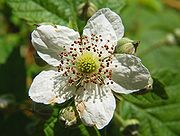 |
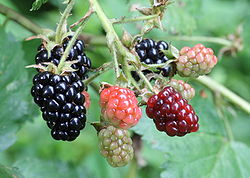 |
|
Crossvine (Bignonia capreolata) Leaf: Leaves are opposite, 4-6 inches long with a third leaf modified into a climbing tendril. Flower: Showy and unscented trumpet-shaped flowers that are red and yellow. Bloom in late April or May Growth Form: Climbing woody vine with tendrils. |
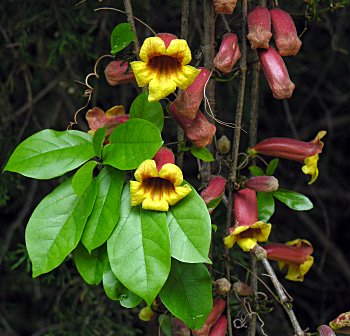 |
|
Lowbush Blueberry (Vaccinum pallidum) Leaf: Alternate leaves 1-2 inches long with finely toothed margins. Leaves are dull green above and pale below. Flower: Small and white hanging in clusters Fruit: Blue-black berry that is sweet and edible. Growth Form: Small shrub about 3 feet tall. |
|
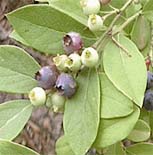 |
|
Greenbrier
or Catbrier (Smilax glauca) Leaf: Alternate parallel-veined leaves 2-4 inches long with smooth margins. Flower: Small and greenish-yellow Fruit: Dark blue berries that occur in clusters. Growth Form: A climbing vine with thorns and tendrils. |
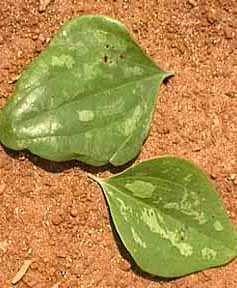 |
 |
|
Japanese Honeysuckle (Lonicera japonica) Leaf: Opposite, oval leaves about 2" long. Flower: Open white, then fade to yellow, sweetly scented. Fruit: Dark blue berry Growth Form: Climbing vine Native of eastern Asia. Major invasive species in North America. |
|
 |
|
Multiflora Rose (Rosa multiflora) Leaf: Compound leaves with 5-9 leaflets. Flower: White to pink flowers about 1" across. Fruit: Reddish to purple berry-like fruits called rose hips. Growth Form: Scrambling shrub that often grows over other plants. Stout stems and recurved thorns. |
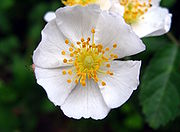 |
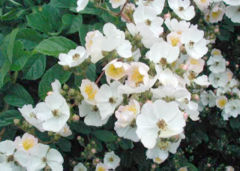 |
|
Muscadine Grape (Vistis rotundifolia) Leaf: Slightly lobed, 2.5-5" long glossy leaves with serrated margins. Dark green above and greenish-yellow below. Flower: Small greenish flowers. Male and female flowers appear on different plants. Fruit: Berries that range from bronze to purple-black in color Growth Form: Deciduous vines growing 60-100 feet up into trees. |
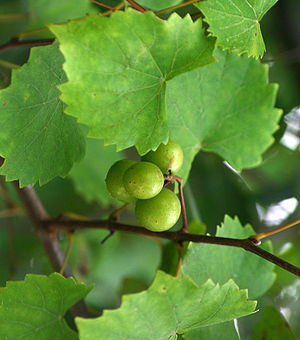 |
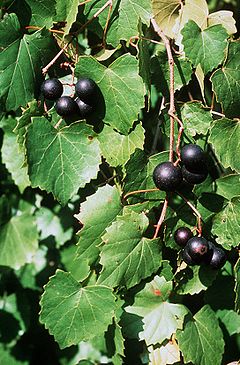 |
|
Pinxter-flower (Rhododendron periclymenoides) Leaf: Alternate, elongate leaves 2-4" long. Flower: Pale to deep pink flowers 1.5 to 2 inches across Growth Form: Shrub that grows 2-8 feet high. Also known as pink azalea. |
|
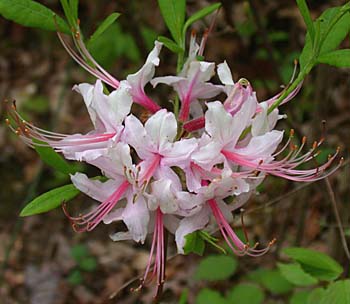 |
|
Poison Ivy (Toxicodendron radicans) Leaf: Each leaf consists of 3 leaflets. "Leaves in three, then let it be." Leaves turn red in the fall. Leaves are somewhat shiny when mature. Flower: Small and usually white. Fruit: Berries are grayish-white in color. Growth Form: Plants can grow as a shrub up to about 4 ft tall, as a groundcover up to 10" high, and as a climbing vine that can grow into the tops of tall trees. Poison ivy produces urushiol, an irritant that produces skin rashes with blisters that itch severely for days. Poison Ivy Fact Sheet |
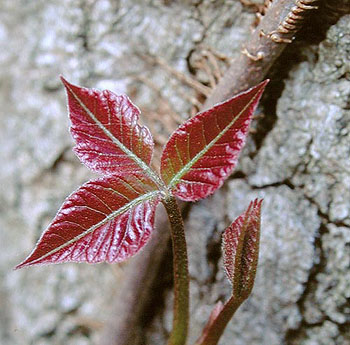 |
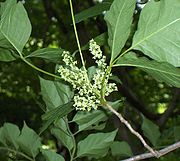 |
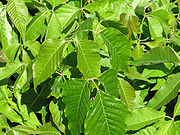 |
|
Privet
(Ligustrum spp.) Leaf: Flower: Small, fragrant white flowers Fruits: Small, purplish-black drupes. Drupes are sometime called stone fruits in that they contain a hard pit or stone inside. Peaches and olives are examples examples of drupes. Growth Form: Semi-evergreen shrub that forms dense thickets. See discussion of privet in the exotic species section of web site. |
|
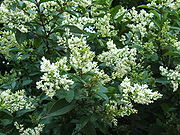 |
|
Virginia Creeper (Parthenocissus
quinquefolia) Leaf: Palmately compound leaves with 5 leaflets with toothed margins. Flower: Small and greenish that grow in clusters. Fruit: Purplish-black berries that are poisonous. Growth Form: Climbing vine that uses forked tendrils to grow up to 60 or more feet high into trees. |
|
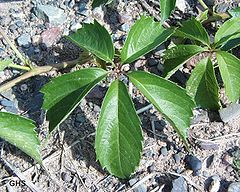 |
